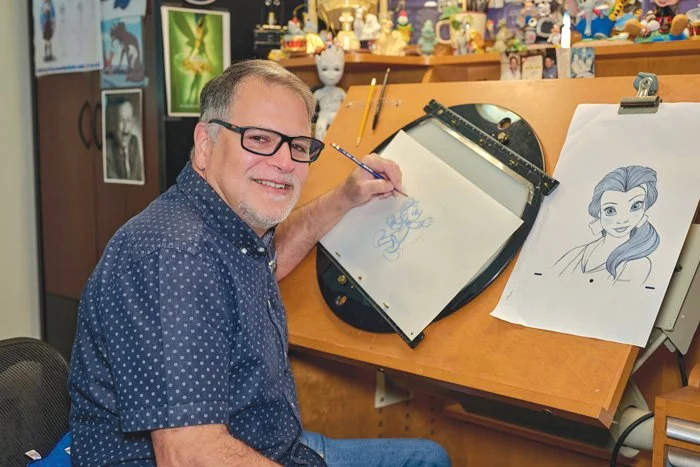Una santa que fortalece la vida devocional de los guatemaltecos
/"Nunca sintieron que los habían notado"
Esta es la estatua de Santa Eulalia de Barcelona que fue comprada por los guatemaltecos la cual será colocada en colocada en la iglesia San Bonifacio de Sioux City.
Dawn Prosser
Directora de comunicaciones de la Diócesis de Sioux City
Un espacio devocional en desuso se ha convertido en una oportunidad para que una población deje su huella en la historia de su parroquia. La comunidad guatemalteca de la Parroquia de la Catedral de Sioux City se unió para asegurarse que la estatua de cinco pies de Santa Eulalia de Barcelona se convierta en un elemento permanente en su parroquia.
El sacerdote David Esquiliano, párroco de la Catedral de Sioux City destacó que los feligreses guatemaltecos son la segunda comunidad hispana más grande del estado de Iowa y de la Catedral, El grupo ha estado muy activo en la parroquia y constituye el grupo más grande que asiste a la Misa en español de las 10:30 a.m. en la Iglesia de San Bonifacio, que es parte de la parroquia junto con la Catedral de la Epifanía y la Iglesia de San José.
“La mayoría de la comunidad guatemalteca va a esa misa. Están muy involucrados, son parte del coro, son servidores y lectores. Y todos tienen devoción por Santa Eulalia de Barcelona, mártir, por la devoción que les viene de su ciudad natal de dónde vienen la mayoría de guatemaltecos,” dijo el padre Esquiliano.
A sólo dos días de la fiesta del santo, la nueva estatua será develada y bendecida en una misa especial el 10 de febrero a las 10:30 a. m. en la Catedral por el obispo Walker Nickless, seguida de una fiesta en el Centro Epifanía. Se invita al público a asistir a los eventos.
Espacio devocional
El espacio para la estatua se creó 2022, a partir de la eliminación de los bancos que no coincidían en la parte trasera del santuario de San Bonifacio.
“Basándonos en la asistencia, no vimos la necesidad de esos bancos que eran indicados porque no estaban hechos para ese espacio,” explicó el padre Esquiliano. “Al eliminarlos, ganamos algo de espacio. Como ya hay una estatua de la Piedad en un lado, el padre Galles sugirió que pusiéramos otra estatua allí.”
Los dos sacerdotes consideraron una estatua de Nuestra Señora de Guadalupe debido al predominio de feligreses hispanos y porque es la patrona de la diócesis y de América.
“Mientras mirábamos ese [espacio] y pensamos, ya sabes, los guatemaltecos realmente se han adueñado de San Bonifacio en muchos sentidos, desde la limpieza de la iglesia hasta la participación en la misa de las 10:30 de la mañana… en gran medida debería de pasar a ser una parte de la comunidad guatemalteca,” reflexionó el padre Galles.
Estaba claro que la estatua de Santa Eulalia serviría bien al espacio devocional y a la gran comunidad guatemalteca.
Fe viva
“Demuestra que la iglesia no está estancada cuando introducimos arte nuevo que es importante para la vida devocional de personas que quizás no siempre hayan vivido allí. La historia de San Bonifacio es la de los inmigrantes alemanes y algunos irlandeses,” dijo el padre Galles, señalando las estatuas de San Bonifacio y San Patricio en el altar mayor. “Lo que alguna vez fue se entrega, tal vez a un nuevo grupo étnico. Y esa nueva etnia tiene sus propias devociones y santos que son muy importantes para ellos. Queremos seguir intentando alimentar y fomentar esa fe viva entre las personas.”
Para cumplir la visión de consagrar al santo en la Iglesia de San Bonifacio, el párroco incluyó la compra de la estatua en la lista del 2022 de los deseos navideños de la parroquia. Pronto, los líderes de la comunidad guatemalteca se acercaron a él para patrocinar el costo de la estatua como grupo.
Todos ellos estaban interesados en comprar la estatua juntos, recaudar fondos juntos en lugar de que personas al azar dieran aquí y allá," dijo el sacerdote.
Invitado a varias reuniones organizativas de los feligreses guatemaltecos para recaudar fondos, el padre Esquiliano dijo que el grupo estaba entusiasmado con la idea de comprar una estatua de su patrona.
"Querían que estuviera allí sólo para compartir el plan y explicar cómo surgió todo esto," explicó. “Una de las cosas que dijeron y que me pareció hermosa es que han estado aquí durante tanto tiempo y nunca sintieron que los habían notado o visto y que finalmente se sintieron que los habían notado.”
Identidad única
Después de haber pasado un tiempo en Guatemala en 2014 para realizar estudios de inmersión lingüística como seminarista, el padre Galles estaba familiarizado con la devoción de los lugareños por el joven mártir español. Dijo que reconoce que la comunidad guatemalteca en la parroquia a menudo se siente eclipsada.
"A menudo pueden ser como la 'comunidad oculta,'" dijo el vicario parroquial, señalando que algunos creen que todos los hispanos son de México. "De hecho, tienen su propia identidad y su propia cultura."
Los feligreses hispanos también provienen de Nicaragua, El Salvador, Cuba y otros países hispanos, así como de México y Guatemala.
“Son similares en cultura, pero no idénticos. No es diferente a los Estados Unidos, los estados son similares en cultura, pero no idénticos. Hay grandes diferencias y variaciones regionales,” dijo el padre Galles.
Unificando la comunidad
Gracias a las generosas contribuciones de la comunidad guatemalteca, los fondos se recaudaron rápidamente. Como Santa Eulalia no es muy conocida en los Estados Unidos, las opciones para una estatua ya hecha que se adaptara al área eran pocas. La parroquia encargó a un artista la creación de la imagen de Santa Eulalia según las especificaciones del espacio devocional. La obra de arte se completó este invierno y se colocará en una plataforma con un soporte para instalar velas de peticiones o agradecimiento por favores recibidos.
El padre Esquiliano señaló que la parroquia celebra regularmente una misa el sábado cercano a la fiesta del santo, con música y vestimentas tradicionales. El proyecto de comprar y poner la estatua en la Iglesia de San Bonifacio ha unido a la comunidad guatemalteca.
“En mi ciudad natal (Chetumal en México), es posible que tengamos devoción por cierta santa. Pero una vez que llegamos aquí, todo se vuelve más como un denominador común, incluso si no fue en su país de origen,” dijo el pastor. “Entonces pude ver eso para los guatemaltecos. Aunque no sean del mismo pueblo, si no tenían la devoción a Santa Eulalia, aquí se ha convertido en algo unificador.”
Santa Eulalia de Barcelona vivió durante las persecuciones de Diocleciano. A los 13 años se enfrentó al gobernador por su persecución a los cristianos. El gobernador la desnudó y la torturó porque no quiso denunciar sus creencias.
Algunos relatos afirman que fue crucificada en una cruz en forma de X y luego oró a Dios para que la llevaran al cielo justo antes de morir. Las imágenes artísticas de la mártir suelen incluir una cruz en forma de X.
Murió el 12 de febrero del año 303 y fue canonizada en el año 663. Es la copatrona de Barcelona. Su fiesta es el 12 de febrero.
Translation
A saint who strengthens the devotional life of Guatemalans
"They never felt like they had been noticed."
This is the statue of Saint Eulalia of Barcelona that was purchased by the Guatemalans which will be placed in the San Boniface church of Sioux City.
Dawn Prosser
Director of Communications, Diocese of Sioux City
A disused devotional space has become an opportunity for a population to leave their mark on the history of their parish. The Guatemalan community of Sioux City Cathedral Parish came together to ensure that the five-foot statue of Saint Eulalia of Barcelona becomes a permanent fixture in their parish.
Priest David Esquiliano, pastor of the Sioux City Cathedral, highlighted that the Guatemalan parishioners are the second largest Hispanic community in the state of Iowa and the Cathedral. The group has been very active in the parish and constitutes the largest group that attends to the 10:30 a.m. Spanish Mass. in the Church of Saint Boniface, which is part of the parish along with the Cathedral of the Epiphany and the Church of Saint Joseph.
“The majority of the Guatemalan community goes to that mass. They are very involved, they are part of the choir, they are servers and readers. And they all have devotion to Saint Eulalia of Barcelona, a martyr, because of the devotion that comes from her hometown where the majority of Guatemalans come from,” said Father Esquiliano.
With just two days left until the saint's feast day, the new statue will be unveiled and blessed at a special mass on February 10 at 10:30 a.m. m. in the Cathedral by Bishop Walker Nickless, followed by a party at the Epiphany Center. The public is invited to attend the events.
Devotional space
The space for the statue was created in 2022, from the removal of mismatched benches at the rear of the Sanctuary of Saint Boniface.
“Based on attendance, we did not see the need for those benches that were indicated because they were not made for that space,” explained Father Esquiliano. “By eliminating them, we gain some space. Since there is already a statue of the Pieta on one side, Father Galles suggested that we put another statue there.”
The two priests considered a statue of Our Lady of Guadalupe because of the predominance of Hispanic parishioners and because she is the patron saint of the diocese and of America.
“As we looked at that [space] and thought, you know, Guatemalans have really taken ownership of San Bonifacio in many ways, from cleaning the church to participating in the 10:30 a.m. mass… very much so.” “It should become a part of the Guatemalan community,” reflected Father Galles.
It was clear that the statue of Saint Eulalia would serve the devotional space and the greater Guatemalan community well.
Living faith
“It shows that the church is not stagnant when we introduce new art that is important to the devotional life of people who may not have always lived there. The history of St. Boniface is that of German immigrants and some Irish,” Father Galles said, pointing to the statues of St. Boniface and St. Patrick on the main altar. “What once was is handed over, perhaps to a new ethnic group. And this new ethnic group has its own devotions and saints that are very important to them. “We want to continue trying to feed and foster that living faith among people.”
To fulfill the vision of consecrating the saint in the Church of Saint Boniface, the parish priest included the purchase of the statue on the parish's 2022 list of Christmas wishes. Soon, Guatemalan community leaders approached him to sponsor the cost of the statue as a group.
"They were all interested in buying the statue together, raising funds together instead of random people giving here and there," the priest said.
Invited to several organizational meetings of Guatemalan parishioners to raise funds, Father Esquiliano said the group was excited about the idea of purchasing a statue of their patron saint.
"They wanted me to be there just to share the plan and explain how this all came about," he explained. “One of the things they said that I thought was beautiful is that they've been here for so long and they never felt like they'd been noticed or seen and they finally felt like they'd been noticed.”
Unique identity
Having spent time in Guatemala in 2014 for language immersion studies as a seminarian, Father Galles was familiar with the locals' devotion to the young Spanish martyr. He said he recognizes that the Guatemalan community in the parish often feels overshadowed.
"They can often be like the 'hidden community,'" the parochial vicar said, noting that some believe all Hispanics are from Mexico. "In fact, they have their own identity and their own culture."
Hispanic parishioners also come from Nicaragua, El Salvador, Cuba and other Hispanic countries, as well as Mexico and Guatemala.
“They are similar in culture, but not identical. It is no different than the United States, the states are similar in culture, but not identical. There are great regional differences and variations,” Father Galles said.
Unifying the community
Thanks to the generous contributions of the Guatemalan community, funds were raised quickly. Since Saint Eulalia is not well known in the United States, the options for a ready-made statue to fit the area were few. The parish commissioned an artist to create the image of Saint Eulalia according to the specifications of the devotional space. The artwork was completed this winter and will be placed on a platform with a stand to install petition or gratitude candles for favors received.
Father Esquiliano pointed out that the parish regularly celebrates a mass on the Saturday close to the saint's feast day, with traditional music and clothing. The project to buy and place the statue in the Church of San Bonifacio has united the Guatemalan community.
“In my hometown (Chetumal in Mexico), we may have devotion to a certain saint. But once we get here, everything becomes more like a common denominator, even if it wasn't in your home country,” the pastor said. “So I could see that for Guatemalans. Even if they are not from the same town, if they did not have devotion to Saint Eulalia, here it has become something unifying.”
Saint Eulalia of Barcelona lived during the persecutions of Diocletian. At age 13 she confronted the governor over his persecution of Christians. The governor stripped her naked and tortured her because she did not want to denounce her beliefs.
Some accounts of her claim that she was crucified on an X-shaped cross and then she prayed to God to be taken to heaven just before she died. Artistic images of the martyr often include an X-shaped cross.
She died on February 12, 303 and was canonized in 663. She is the co-patron of Barcelona. Her party is February 12.








































